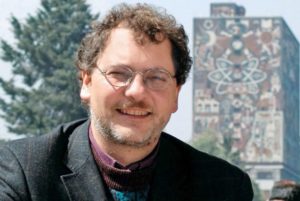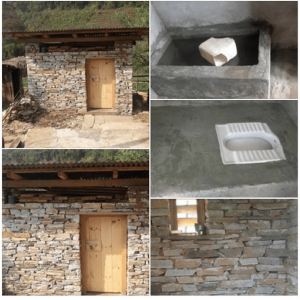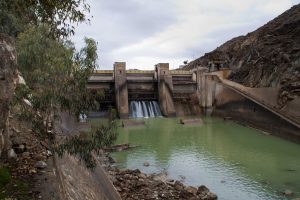A delegation of indigenous leaders from Amazonia has crossed the Atlantic to demand that the Climate Summit in Morocco (COP22) recognise their rights and role in conserving the planet’s largest rainforest and limiting carbon emissions.
Indigenous peoples are particularly concerned about Chinese-funded extractive and infrastructure projects in the region, which often operate without robust social and environmental guarantees, and the lack of enforcement of rules by their national governments.
“We came to COP22 specifically to insist on dialogue with the Chinese. All we want is for them to respect our rights. Indigenous people can be allies for Chinese investments, instead of enemies,” Edwin Vásquez of the Indigenous Coordination of the Amazon Basin (COICA) told Diálogo Chino.
“I am very worried and scared. We have to negotiate on equal terms and understand what our rights are,” Vásquez said, adding: “The Inter-American Development Bank and the World Bank at least have policies and safeguards for indigenous peoples, which allows us to demand our rights,” he stated. COICA is concerned about the manner in which Latin American governments have been granting concessions to foreign companies, including Chinese, without proper consultations with those affected by projects.
Xie Zhenhua, China’s special representative for climate change, told Diálogo Chino: “China established a South-South cooperation fund. In the last three years, we’ve allocated US$100 million to help developing countries improve their technical frameworks,” adding that they continue to finance low-carbon projects and provide educational training in climate change issues. “All this includes Latin American countries. China wants to continue this cooperation,” he said.
Equal to Western firms
On balance, Chinese companies in the Peruvian mining sector don’t have operating standards any better or worse than their Western counterparts, a study by Peru’s Universidad del Pacífico showed. Responsibility must be shared by firms and governments, who are reluctant or unable to enforce rules governing the social and environmental impacts of projects, the report’s author Cynthia Sanborn recommends.
Peru is the Latin American country which attracts most mining investment from China, which accounts for a third of total investment in the sector. Chinese companies also have significant interests in the oil exploration and commercial fishing sectors.
A quarter of Amazonia is occupied by indigenous territories, with almost 3 million inhabitants. Only 2% of these lands have been deforested, a very low rate compared to lands that are not protected indigenous peoples.
Highways, monoculture farming, hydroelectric plants, and oil exploration, all of which threaten to invade indigenous areas, are prime concerns. Land titles in many of the areas affected have still not been granted to native communities.
“Large projects in Latin America continue to threaten indigenous peoples in the Amazon basin. We strongly reject projects whenever governments do not consult indigenous peoples and violate our fundamental rights,” said Vásquez.
According to Xie, China is increasingly cooperating with Latin American countries to ensure projects’ sustainability. However, when asked by Diálogo Chino about those having unsustainable impacts, Xie responded: “The Chinese government asks companies to follow a low-carbon pathway, according to the green economy.”
Vásquez participated in various panels at the summit that explored the resilience of indigenous economies and directions Latin America can take towards lowering carbon emissions.
“Will these projects serve and benefit indigenous peoples?” Vásquez asks. “No, they’ll just benefit large foreign oil and mining companies.” The situation has worsened since COP20 in Lima in 2014, Vásquez claims, saying indigenous peoples are currently experiencing an “invasion”, the destruction of their land and social conflicts.
Indigenous peoples who live in the world’s tropical forests are responsible for managing and preserving 54,546,000 metric tonnes of carbon, a recent study co-authored by the Rights and Resources Initiative (RRI), the Woods Hole Research Center and the World Resources Institute (WRI) showed. This represents a quarter of all carbon stored in the tropics.
According to the authors of the study, governments’ failure to acknowledge indigenous peoples’ land rights is a major barrier to forest conservation. When these rights are not recognised, lands are targeted by aggressive investors. One tenth of all carbon stored in tropical forests is located in areas where native people have not obtained formal recognition and rights of occupation. This is equivalent to the annual carbon emissions of around 17 billion cars.
REDD+ Indígena
Indigenous peoples in Peru created a mechanism for financial compensation in order to preserve their land, which became known as REDD+Indígena Amazônico. REDD Reducing Emissions from Deforestation and Forest Degradation) initiatives aim to develop policies that reduce greenhouse gas emissions from deforestation and help maintain forest stocks, which store carbon.
“We adapted the concept of REDD+ to our own language. The message of the new Peruvian government focuses on infrastructure without taking into account how it has affected indigenous territories. The principle of free prior and informed consultation is not being properly implemented in Peru,” Henderson Rengifo, a member of the Achuar people and president of the Interethnic Association for Development of the Peruvian Jungle (AIDESEP), told Diálogo Chino.
In 2011, indigenous Peruvians began a pilot project to halt forest devastation and promote the sustainable management of resources in the Amarakaeri communal reserve in the Madre de Dios region of Peru.
“Now we are going to expand to 12 other indigenous territories which add up to more than 2 million hectares,” Rengifo said.
To meet its goal of reducing greenhouse gas emissions from deforestation by 30% by 2030, the Peruvian government will have to work together with the indigenous peoples, Rengifo added.
“In Peru, there are 15 million hectares under our management. We are the ones who take care of the forest. We believe that we should be taken into account. If not, they won’t be able to achieve their goal,” Rengifo said.
Rengifo’s goal is to include REDD+Indígena Amazônico in the Peru’s national climate strategy. The country is home to the second largest forested area in Latin America, covering approximately 60% of national territory and is home to over 1000 native communities with some 5000 inhabitants.
Rengifo explains that the project takes a holistic approach to management of climate change mitigation and indigenous territorial conservation. Peru’s national REDD plan references REDD+Indígena Amazônico and in 2013, AIDESEP mobilised about US$14 million to serve the core issues of its programme, such as land titling, forest management, and community governance.





